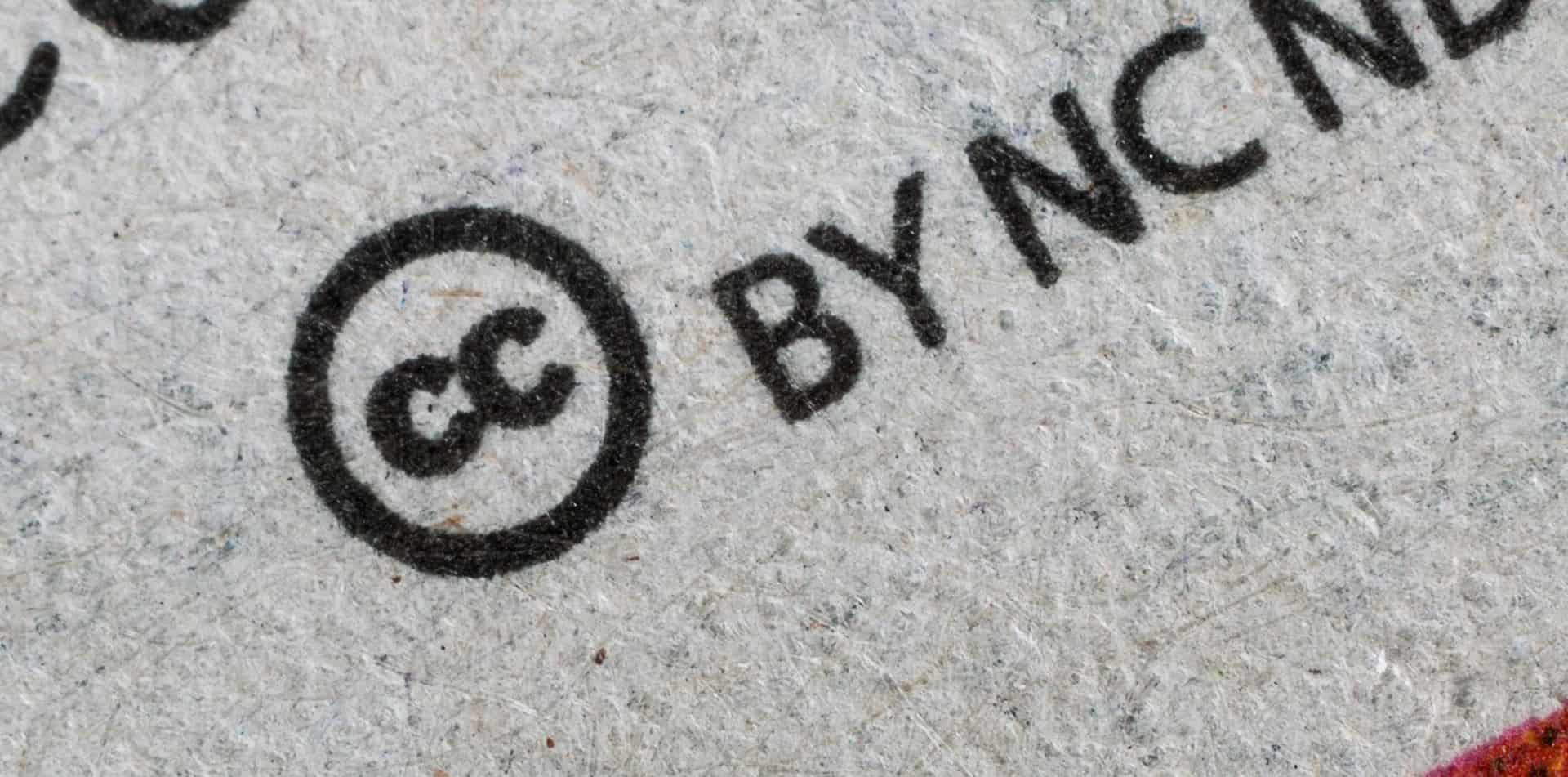A Creative Commons (CC) license is a public license that tells other creatives what they’re allowed to do with their work. While a typical Creative Commons license defaults to “no rights reserved,” you can change it to “some rights reserved” by using 6 other CC-type licenses.
What are the 7 Types of Creative Commons Licenses?
While CC licenses look similar to general copyright licenses, or even a trademark, it’s vital to know the difference between copyright law and what a trademark symbol is before continuing.

1. Public Domain (CC0)
If a CC license stays “as is,” it is considered public domain. A public domain image or video can be copied, published, displayed, and communicated for commercial use without credit. Other creatives are free to modify and adapt the original work via video editing tools, like Photoshop.
2. Attribution (CC BY)
Attribution or a CC BY license is similar to the public domain license, except other creatives have to give your credit when they use your original work. Proper attribution includes the name of the creator, a link to the license, and an indication if any reasonable changes were made.
3. Attribution-ShareAlike (CC BY-SA)
Attribution-ShareAlike or CC BY-SA allows other creatives to remix, adapt, and build on your work for commercial purposes, provided they credit the original creator. If any new works were made using a CC BY-SA work, it must use the CC BY-SA license and be commercially usable.
4. Attribution-NoDerivatives (CC BY-ND)
Attribution-NoDerivatives or CC BY-ND gives creatives permission to copy, publish, display, and communicate the original work for commercial use unless you modify it. But you can modify the work so long you’re distributing it privately to friends and family, like for a holiday card.
5. Attribution-NonCommercial (CC BY-NC)
Attribution-NonCommercial or CC BY-NC is one of three Creative Commons licenses available that won’t allow other creatives to distribute your work commercially. However, other creatives can still copy, publish, modify, and adapt the original work if it’s properly credited and attributed.
6. Attribution-NonCommercial-ShareAlike (CC BY-NC-SA)
Attribution-NonCommercial-ShareAlike or CC BY-NC-SA will give other creatives the ability to copy, publish, modify, and adapt the original work if it’s attributed. But similar to the CC BY-SA license, the person who remixes the original work has to use the same CC BY-NC-SA license.
7. Attribution-NonCommercial-NoDerivatives (CC BY-NC-ND)
Attribution-NonCommercial-NoDerivatives or CC BY-NC-ND is the strictest Creative Commons license available. Other creatives can copy and publish the original work with proper credit, but they can’t use it commercially or modify it in any way unless they’re using the work privately.
Why Use a CC0 instead of a Creative Commons License?
While a Creative Commons license restricts how others can use your original works, CC0, public domain, or “no rights reserved” licenses don’t come with any restrictions. But if you don’t want to add any restrictions to your work, can’t you just opt out of getting a license?
Not necessarily. It’s actually difficult to waive all of your rights to a creative work simply by opting out. US laws state that creative rights are automatically granted to the creator with little wiggle room. However, if you make creative work for an employer, the copyright will automatically transfer to the employer unless you state in a contract otherwise, or they forfeit their right.

If you want to put your own work into the public domain, you’ll need a CC0 license. Although it can’t completely relinquish all of your rights, it’s a great alternative to other CC licenses.
You may want to use a CC0 instead of another CC because:
- You want your work to be easily citable
- You want creatives to gain access to a large free library
- You want your work to be easily edited and distributed
No matter what Creative Commons license you choose, you don’t have to apply for one or pay any money to use them. Simply copy the license you want to use directly on your website.
